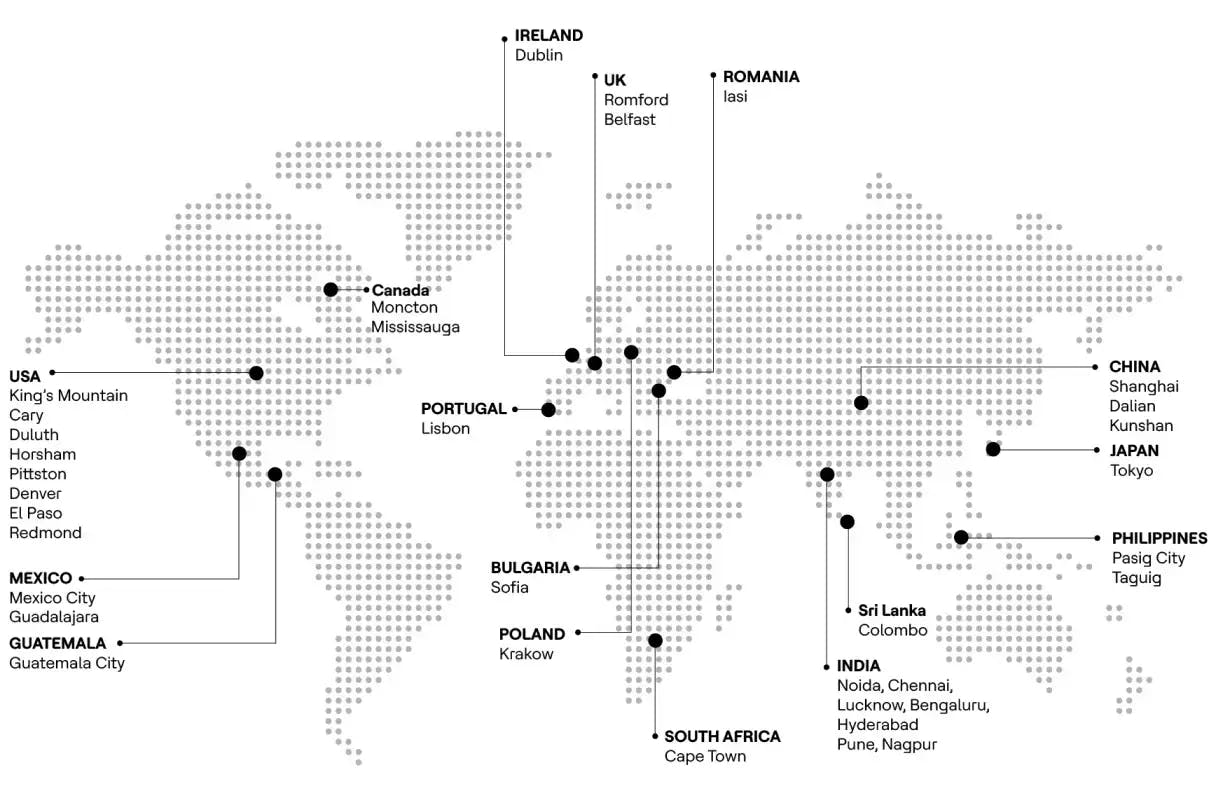We think these topics might interest you
Optimizing Customer Experiences with Our 3R ecosystem
To provide meaningful and personalized engagements, our CX Services, which focus on delivering superior customer experiences, are built on the 3R ecosystem: Reimagining customer journeys, Reconfiguring front-line support and Redesigning fundamental customer interactions.
Deliver Personalized Experiences at Scale with Our RCPG Value Offerings
We help clients become more consumer-centric with our innovative services portfolio. With a strategic focus on innovation, we excel at protecting our clients' brands while optimizing business outcomes.
Drive consistent customer satisfaction by building and retaining brand loyalty with our white glove services.
Increase your sales, upsells and revenue while providing an excellent customer experience.
Turn your satisfied customers into delighted brand advocates with our loyalty programs and systems.
Protect your brand and manage compliance with our critical event management services for regulated and non-regulated products.
Scale faster by focusing on running your business while we take care of your end-to-end fulfillment needs.
Global Reach, Local Expertise
Unveiling our extensive network of CX hubs and delivery centers
Our geo-balanced global right-shore delivery network consists of eight (and growing) CX hubs and more than forty delivery centers. Supported by state-of-the-art labs, centers of excellence, practitioners and a scalable delivery environment, these hubs help us to manage benchmarked engagements for our global customer base.

- Sofia
- Mississauga
- Moncton
- Dalian
- Kunshan
- Shanghai
- Guatemala City
- Bengaluru
- Chennai
- Hyderabad
- Lucknow
- Nagpur
- Noida
- Pune
- Dublin
- Tokyo
- Guadalajara
- Mexico City
- Pasig City
- Taguig
- Krakow
- Lisbon
- Iasi
- Cape Town
- Colombo
- Belfast
- Romford
- Cary
- Denver
- Duluth
- El Paso
- Horsham
- King’s Mountain
- Pittston
- Redmond
Case Studies
We don’t just paint visions for CX excellence. We make them happen for the world’s leading enterprises.
Insights and Resources


Deliver personalized experiences at scale with next-gen technology
Our mission? Create "customer for life" experiences.









